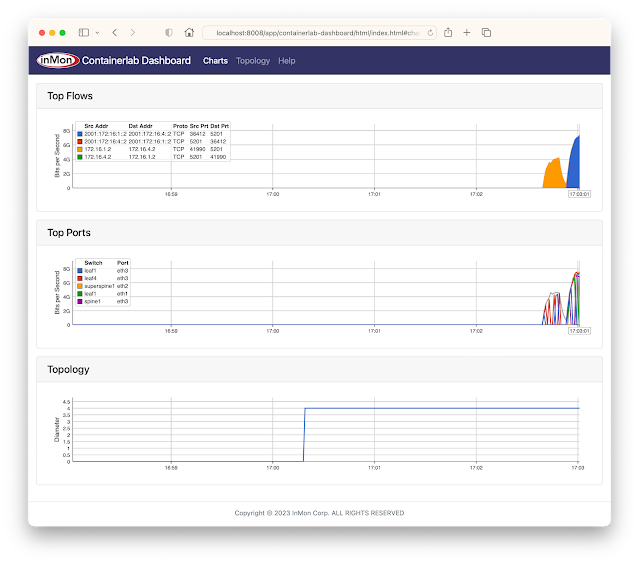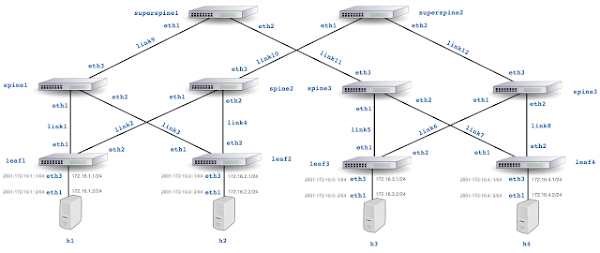Free Subscription No Longer Needed to Watch the ipSpace.net Videos
I’m publishing a link to a free ipSpace.net video several times each month, usually with a notice saying you need free subscription to watch the video. I had to put that limitation in place when I was hosting videos on AWS S3 – unlimited streaming could explode my AWS bill.
Recently I moved the video storage to Cloudflare R2. Cloudflare claims they will never charge egress fees, and as long as that’s true (and they don’t start chasing me for generating too much traffic) I see no reason to bother you with registration and login procedures – starting immediately, you can watch the free ipSpace.net videos without an ipSpace.net account.
AWS CLIv2 on OpenBSD

The AWS CLI is a tool set that lets you manage your AWS resources. The CLI comes in two versions which, at the time of this writing, are developed concurrently: version 1 and version 2.
Internally, the AWS CLIv1 and v2 are quite different. Version 2 pulls in AWS libraries--libraries which are used across the AWS SDK ecosystem--rather than reinventing the wheel when it comes to common tasks, such as talking to Amazon S3. Running AWS CLIv2 on your operating system of choice requires building and installing these common AWS libraries.
I contributed changes to s2n-tls, aws-lc, the Python runtime, some build tooling, and various other libraries. As a result, the AWS CLIv2 now builds and runs on OpenBSD.
To make installation simple, I've created an OpenBSD port for CLIv2 and its dependencies. Instructions for installing the port are below.
Predicting and Surviving Correlated Failures Redundancy
In this archived panel discussion, Frank Ohlhorst, Henry Sow, and Stephen Lawton connect to deliver an in-depth conversation detailing the need for 'Predicting and Surviving Correlated Failures Redundancy' during our 'Network Resilience Boot Camp' presented by Data Center Knowledge and Network Computing. This excerpt is from our live 'Network Resilience Boot Camp' virtual event moderated by Bonnie D. Graham.Why a Cloud Operating Model Requires a Modern Load Balancer
Businesses looking to embrace the cloud must also ensure their network infrastructure, which includes load balancers, has been fully modernized.Containerlab dashboard
The GitHub sflow-rt/containerlab project contains example network topologies for the Containerlab network emulation tool that demonstrate real-time streaming telemetry in realistic data center topologies and network configurations. The examples use the same FRRouting (FRR) engine that is part of SONiC, NVIDIA Cumulus Linux, and DENT network operating systems. Containerlab can be used to experiment before deploying solutions into production. Examples include: tracing ECMP flows in leaf and spine topologies, EVPN visibility, and automated DDoS mitigation using BGP Flowspec and RTBH controls. The screen capture at the top of this article shows a real-time dashboard displaying up to the second traffic analytics gathered from the 5 stage Clos fabric shown above. This article walks through the steps needed to run the example.git clone https://github.com/sflow-rt/containerlab.git cd containerlab ./run-clabRun the above commands to download the project and run Containerlab on a system with Docker installed. Docker Desktop is a conventient way to run the labs on a laptop.
containerlab deploy -t clos5.ymlStart the emulation.
./topo.py clab-clos5Post topology to sFlow-RT REST API. Connect to http://localhost:8008/app/containerlab-dashboard/html/ to access the Dashboard shown at the top of this article.
docker exec -it clab-clos5-h1 iperf3 -c 172.16. Continue reading
Adapting to the Cloud Era of Cybersecurity: How CISO’s Priorities Are Evolving
With the move to the cloud, CISOs must shift priorities from operating security programs to overseeing (monitoring and auditing) outsourced cybersecurity programs.Network Break 442: HashiCorp Swaps Open Source For BSL; Open Enterprise Linux Goes After RHEL
Today on Network Break we discuss big moves in open source, including HashiCorp switching from an open source license to "business source" and Red Hat competitors banding together to offer an alternative to Red Hat Enterprise Linux (RHEL). We also discuss Google's odd attempt to get employees back to the office by charging them to stay at an on-campus hotel.
The post Network Break 442: HashiCorp Swaps Open Source For BSL; Open Enterprise Linux Goes After RHEL appeared first on Packet Pushers.
Network Break 442: HashiCorp Swaps Open Source For BSL; Open Enterprise Linux Goes After RHEL
Today on Network Break we discuss big moves in open source, including HashiCorp switching from an open source license to "business source" and Red Hat competitors banding together to offer an alternative to Red Hat Enterprise Linux (RHEL). We also discuss Google's odd attempt to get employees back to the office by charging them to stay at an on-campus hotel.Wasm core dumps and debugging Rust in Cloudflare Workers


A clear sign of maturing for any new programming language or environment is how easy and efficient debugging them is. Programming, like any other complex task, involves various challenges and potential pitfalls. Logic errors, off-by-ones, null pointer dereferences, and memory leaks are some examples of things that can make software developers desperate if they can't pinpoint and fix these issues quickly as part of their workflows and tools.
WebAssembly (Wasm) is a binary instruction format designed to be a portable and efficient target for the compilation of high-level languages like Rust, C, C++, and others. In recent years, it has gained significant traction for building high-performance applications in web and serverless environments.
Cloudflare Workers has had first-party support for Rust and Wasm for quite some time. We've been using this powerful combination to bootstrap and build some of our most recent services, like D1, Constellation, and Signed Exchanges, to name a few.
Using tools like Wrangler, our command-line tool for building with Cloudflare developer products, makes streaming real-time logs from our applications running remotely easy. Still, to be honest, debugging Rust and Wasm with Cloudflare Workers involves a lot of the good old time-consuming and Continue reading
Worth Reading: Networking for AI Workloads
Sharada Yeluri (Senior Director of Engineering at Juniper Networks) wrote a long article describing the connectivity requirements of AI workloads and new approaches to Ethernet fabrics. Definitely worth reading if you’re interested in these topics.

